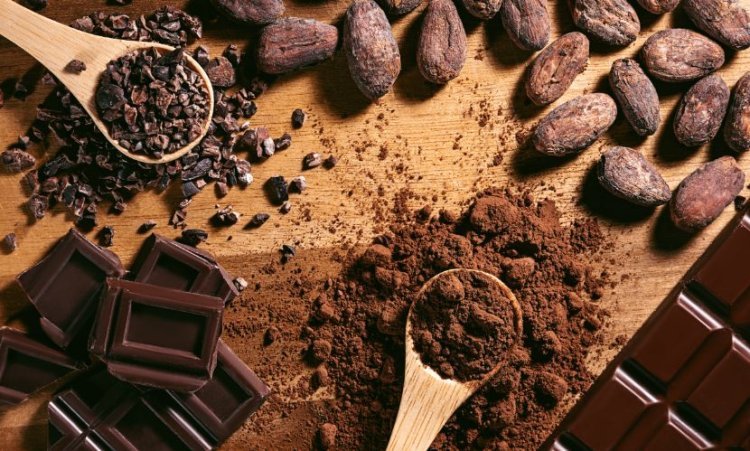Europe Chocolate Market Size, Share & Trends Analysis 2032
According to the report by Expert Market Research (EMR), the Europe chocolate market size was valued at around USD 56.29 billion in 2023.

Europe Chocolate Market Outlook
According to the report by Expert Market Research (EMR), the Europe chocolate market size was valued at around USD 56.29 billion in 2023. Aided by the increasing innovation in flavours and the rising consumption of dark chocolate due to its related health benefits, the market is projected to grow at a CAGR of 4.4% between 2024 and 2032, reaching a value of nearly USD 83.18 billion by 2032.
Chocolate is a popular food product made from cacao beans, the dried and fermented seeds of the cacao tree (Theobroma cacao). It is known for its rich, sweet flavour and smooth texture, and is used in a variety of culinary applications, including confectionery, baking, beverages, and more. Chocolate comes in several forms and varieties, each with distinct characteristics and uses.
The Europe chocolate market has witnessed significant growth and evolution over the past few years, driven by various trends and consumer preferences. One of the most prominent trends is the increasing demand for premium and artisanal chocolates. European consumers are becoming more discerning, seeking high-quality, unique flavours, and ethically sourced products. This shift is partly due to a growing awareness of the health benefits of dark chocolate, which is rich in antioxidants and other beneficial compounds. As a result, there is a rising preference for chocolates with higher cocoa content and less sugar, aligning with broader health and wellness trends.
Sustainability and ethical sourcing have also become crucial factors influencing purchasing decisions in the Europe chocolate market. Consumers are more conscious of the environmental and social impact of their choices, leading to a surge in demand for chocolates that are Fair Trade, Rainforest Alliance certified, or produced using other sustainable practices. This trend has prompted many manufacturers to adopt more transparent supply chains, ensuring that their products meet these ethical standards. Additionally, the market is seeing an increased emphasis on reducing carbon footprints and minimising environmental impact, further aligning with the values of eco-conscious consumers.
The rise of bean-to-bar chocolate makers has significantly enhanced the Europe chocolate market expansion. These producers control the entire process from sourcing the cocoa beans to producing the final product, allowing for greater quality control and the ability to experiment with unique flavour profiles. This approach appeals to consumers who appreciate the craftsmanship and story behind their chocolate. Bean-to-bar makers often highlight the origin of their cocoa beans, adding an element of exoticism and authenticity that resonates with the modern consumer’s desire for distinctive and authentic experiences.
Get a Free Sample Report with Table of Contents
Innovation in flavours and formats is driving growth in the Europe chocolate market. Traditional flavours such as milk and dark chocolate remain popular, but there is a growing appetite for adventurous and unconventional combinations. Ingredients like sea salt, chilli, exotic fruits, and even superfoods are being incorporated into chocolate products, catering to consumers looking for new and exciting taste experiences. Furthermore, the market has seen an expansion in product formats beyond the conventional chocolate bar. Chocolate spreads, drinking chocolates, and coated nuts or fruits are gaining popularity, providing consumers with more ways to enjoy their favourite treat.
Seasonal and special occasion chocolates continue to play a significant role in the Europe chocolate market. Holidays like Christmas, Easter, and Valentine’s Day drive substantial sales, with manufacturers launching limited-edition products and special packaging to attract consumers. These seasonal offerings often feature innovative designs and premium ingredients, appealing to gift-givers and those looking to indulge in something special during festive periods.
Health and wellness trends are also influencing the Europe chocolate market, leading to the development of products that cater to specific dietary needs and preferences. There is a growing demand for vegan, gluten-free, and organic chocolates, reflecting the broader shift towards healthier and more natural food options. Manufacturers are responding by offering a wider range of products that meet these dietary requirements, ensuring that they can cater to a diverse consumer base.
Europe Chocolate Market Segmentation
The Europe chocolate market can be divided based on type, product type, distribution channel, and country.
Market Breakup by Type
- Dark Chocolate
- Milk Chocolate
- White Chocolate
Market Breakup by Product Type
- Pure Chocolate
- Compound Chocolate
Market Breakup by Distribution Channel
- Supermarkets and Hypermarkets
- Convenience Stores
- Online
- Others
Market Breakup by Country
- Germany
- United Kingdom
- France
- Italy
- Others
Competitive Landscape
The EMR report looks into the market shares, plant turnarounds, capacities, investments, and mergers and acquisitions, among other major developments, of the leading companies operating in the Europe chocolate market. Some of the major players explored in the report by Expert Market Research are as follows:
- Mars, Incorporated
- Mondelez International, Inc.
- Ferrero International S.A.
- Nestlé S.A.
- The Hershey Company
- Barry Callebaut AG
- Grupo Arcor
- Chocoladefabriken Lindt & Sprüngli AG
- August Storck KG
- Meiji Holdings Co., Ltd.
- Others
What's Your Reaction?
















